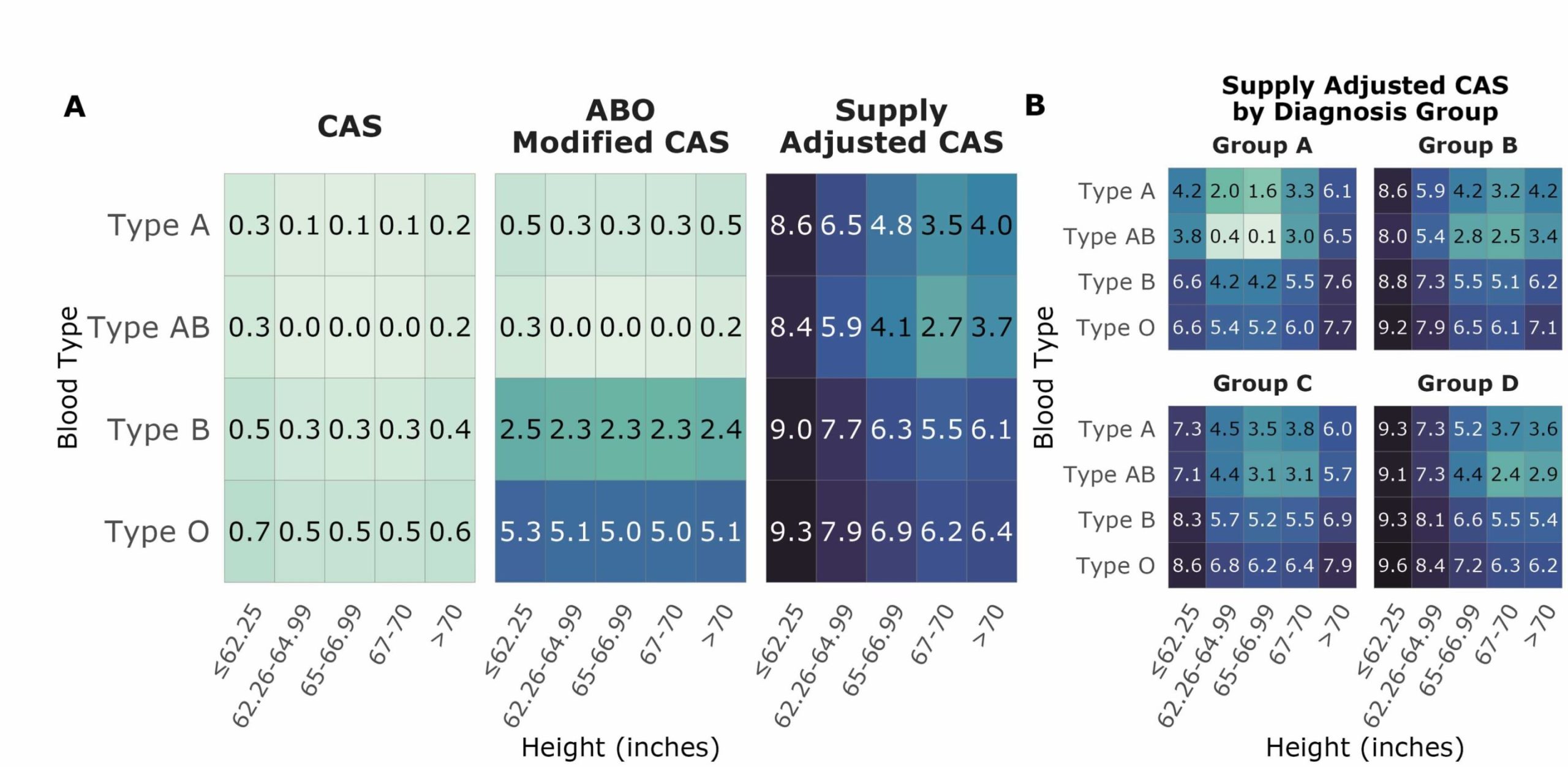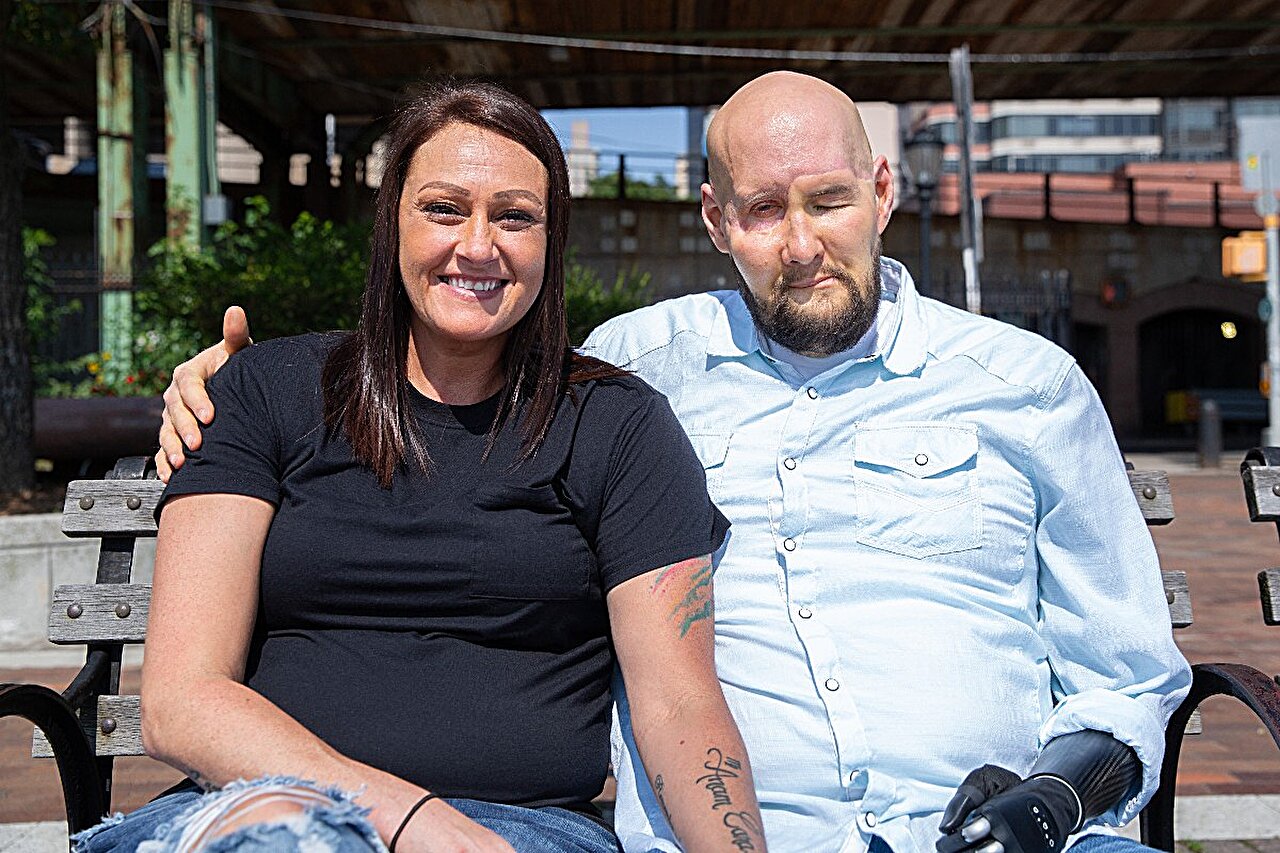
Researchers at Cleveland Clinic and Case Western Reserve University (CWRU) have developed a new method that could potentially help provide better access to lung transplant for transplant candidates who are hard to match because of their blood type or height.
An analysis published in the Journal of Heart & Lung Transplantation showed significant inequity in lung transplant access based on these candidate characteristics and proposes a method for addressing it.
Lung transplant candidates require organs from donors of similar height and compatible blood type. Currently, to allow equally sick candidates equal access to transplant in the United States, the lung allocation system ranks candidates using a Composite Allocation Score, which includes a biological disadvantage subscore. This subscore provides additional points to those with shorter stature and harder-to-match blood types.
Analyzing data for adult lung transplant candidates and donors across the U.S., Cleveland Clinic and CWRU researchers have developed an alternative scoring system for the blood type and height components of the Composite Allocation Score’s biological disadvantage subscore.
The approach projects the supply of compatible organs for a given candidate based on the individual’s combination of characteristics. The team then used a new simulation model, which it recently developed and validated, to assess the expected impact of implementing this proposed solution for U.S. patients on the lung transplant waiting list.
While the current Composite Allocation Score considers the effects of blood type and height independently, the research team’s approach of considering blood type and height-based disparities simultaneously provides a more holistic evaluation of biological disadvantage, as candidates can have any combination of these biological characteristics.
“This approach may result in decreased organ waitlist mortality and increased transplant rates overall,” said Maryam Valapour, M.D., M.P.P., pulmonologist at Cleveland Clinic and co-senior author of this research with Jarrod Dalton, Ph.D., Lerner Research Institute, Cleveland Clinic.
“It also better mitigates the compounding biological disadvantages stemming from hard-to-match combinations of blood type and height,” said Dr. Dalton.
Candidates with type-O blood encounter a disadvantage that stems from the fact that they can only accept organs from type-O donors, while type-O organs are compatible for candidates of any ABO blood type. Controlling for height and patients’ medical urgency, the analysis found that type-O candidates had a 37% lower rate of transplant compared with type-A candidates under the current system.
The height difference between donor and candidate is also an important consideration for surgical feasibility in lung transplantation. The relationship between lung transplant candidates’ height and waitlist outcomes is well established, reflecting the relative lack of very tall or very short donors. For example, a candidate who is 5’9″ has a 61% higher likelihood of accessing a transplant compared with a candidate who is 5’3″.
“This is a central mechanism for the long-observed sex disparity in lung transplant, as women tend to be shorter in stature than men, e.g. 25% of women are 5’3″ or shorter compared to only 1% of men,” said Dr. Valapour.
“While recent policy changes and discussions have focused heavily on blood type-based disparities, our analysis indicates that height extremes likely result in a greater disadvantage than previously understood and have not been sufficiently addressed in the current system,” said Johnie Rose, M.D., Ph.D., CWRU School of Medicine associate professor and co-first author of this research.
“Addressing policies on disparities related to blood type and height will help us move closer to achieving equitable access to lung transplantation in the United States,” said Dr. Valapour.
Next, researchers will conduct work to optimize the weighting given to biological disadvantage Composite Allocation Score components. Eventually, this approach could be applied to allocation of other transplanted organs.
More information:
Johnie Rose et al, A supply-based scoring approach to account for biological disadvantages in accessing lung transplant, The Journal of Heart and Lung Transplantation (2024). DOI: 10.1016/j.healun.2024.09.022
Citation:
Proposed scoring system may enhance equity in organ transplantation (2024, October 15)
retrieved 16 October 2024
from https://medicalxpress.com/news/2024-10-scoring-equity-transplantation.html
This document is subject to copyright. Apart from any fair dealing for the purpose of private study or research, no
part may be reproduced without the written permission. The content is provided for information purposes only.




